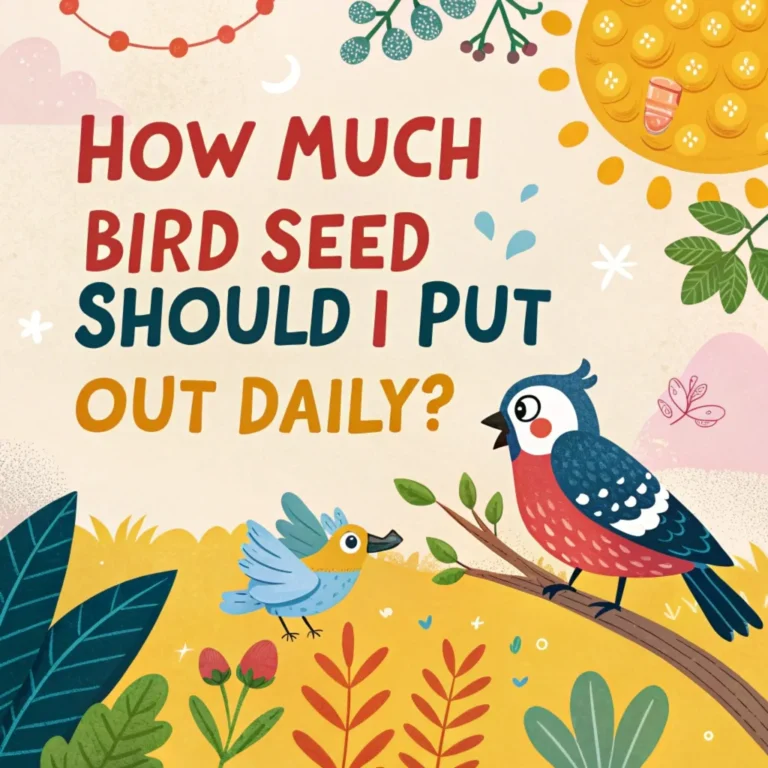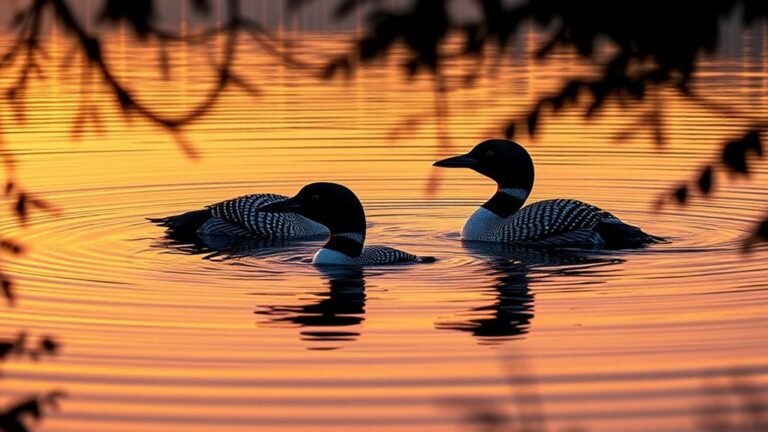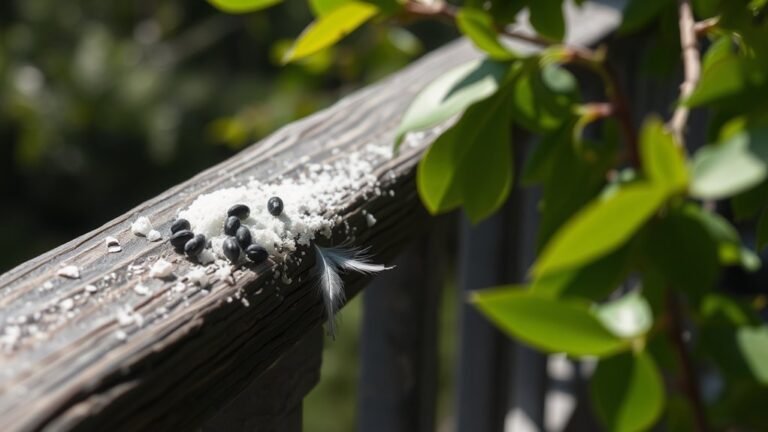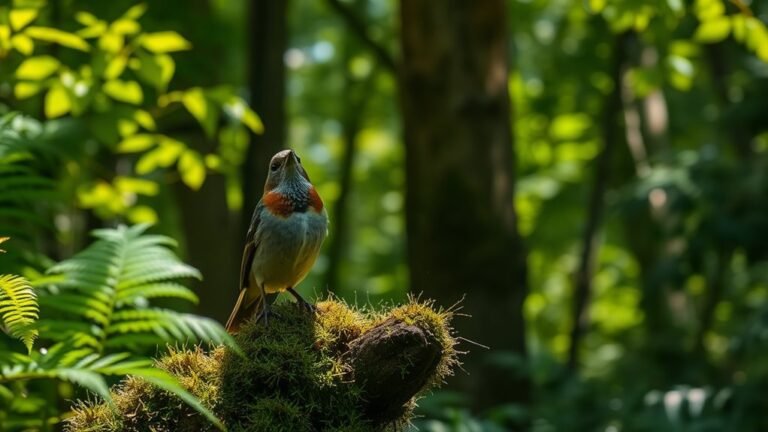What’s the Best Way to Secure a Nest Box to a Tree or Wall?
Securing a nest box is important for the safety of birds. Consider the location, height, and materials for attachment. Use a healthy tree or a protected wall for stability. Choose strong tools and methods to ensure the box stays in place and protects against predators. If you need guidance, many resources can help you create a safe home for birds. Enjoy watching them thrive!
Key Takeaways
- Select a healthy tree or wall for placement, ideally 5 to 10 feet high to protect birds from predators.
- Use strong screws, nails, or straps to attach the nest box securely, ensuring it stays stable and safe.
- Use a level during installation to make sure the nest box is straight, providing comfort for nesting birds.
- Choose weather-resistant materials and sealants to shield the nest box from rain and sun, extending its life.
- Check the nest box regularly. Remove old materials and look for signs of wear or pests to keep it safe for birds.
Choosing the Right Location for Your Nest Box
When choosing a location for your nest box, think about the needs of the birds. Different species have different nesting habits.
Find a spot that resembles their natural environment, such as near trees or shrubs for shelter. Place the nest box at a height of 5 to 10 feet. This height keeps it safe from predators while still being accessible to the birds.
Ensure the area receives adequate sunlight but is protected from strong winds and heavy rain. By creating a welcoming space, you provide a home and support a bird community.
Your careful placement can help attract happy and healthy birds to your nest box.
Tools and Materials Needed for Securing a Nest Box
To securely fasten your nest box, gather essential tools and materials.
Start with sturdy screws or nails for a strong hold. Use a power drill or screwdriver to install them easily.
For extra stability, consider brackets or straps if attaching the box to a wall. A level will help you ensure the nest box sits straight, making it comfortable for the birds.
Finally, use weather-resistant sealant to fill any gaps and protect against the elements.
With these tools and materials, you're creating a safe haven for wildlife.
Attaching a Nest Box to a Tree: Step-by-Step Guide
Attaching a nest box to a tree can be enjoyable and beneficial for birds. Follow these steps for success:
- Choose a Tree: Select a healthy tree that's about 5-10 feet high. Look for a location that's safe for birds.
- Select a Nest Box: Pick a nest box based on the bird species you want to attract. Bluebirds like open boxes, while chickadees prefer snug, enclosed ones.
- Secure the Box: Use a sturdy strap, screws, or nails to attach the box to the tree. Make sure it's secure enough to resist wind but not so tight that it harms the tree.
- Monitor the Box: Check the nest box regularly for signs of nesting activity. Be patient, as it may take time for birds to find their new home.
By following these steps, you can create a safe environment for birds to raise their young.
Enjoy watching them thrive!
Securing a Nest Box to a Wall: Best Practices
Securing a nest box to a wall can be a fulfilling project. It provides a safe space for birds.
Start by choosing strong materials for the nest box, like untreated wood or durable plastic. These materials will endure outdoor conditions.
Select a location that protects the box from bad weather and predators. Aim for a height of at least five feet off the ground. Use a level to ensure the box is straight. This step is important for stability.
If you want to paint or decorate the box, choose non-toxic options that are safe for birds.
Using Brackets and Hardware for Stability
Using brackets and hardware is important for keeping your nest box stable and secure. The right choice of brackets and hardware helps protect your nest box from bad weather and animals.
Here are some simple tips to help you:
- Choose heavy-duty brackets to resist strong winds and rain.
- Use rust-resistant hardware to avoid rusting over time.
- Look for adjustable brackets to adapt as your tree or wall changes position.
- Make sure all screws are tight to prevent any shaking.
Ensuring Proper Ventilation and Drainage
To protect your nest box, focus on stability, ventilation, and drainage. Good ventilation is essential for the health of birds. You can achieve this by adding small holes near the top of the box. These holes help control temperature and reduce moisture. A well-ventilated box provides a comfortable space for birds.
For proper drainage, create a slight slope in the base or drill small holes in the bottom. This prevents water from collecting inside, keeping the nest dry.
Regular Maintenance and Inspections
To ensure your nest box remains a safe place for birds, regular maintenance and inspections are important.
Following a maintenance schedule helps keep your nest box in good condition, providing comfort and safety for the birds.
Here are key points to remember:
- Look for signs of wear or damage.
- Remove old nesting materials after the breeding season.
- Check that the box is securely mounted and stable.
- Inspect for any pest problems.
By taking these steps, you can help create a welcoming environment for your feathered friends.
Regular checks and care make a big difference in their safety and comfort.
Creating a Bird-Friendly Environment Around the Nest Box
After ensuring the nest box is well-maintained, you can improve the area around it to attract birds.
Start by planting native shrubs and flowers. These plants provide food and shelter from predators. Choose a mix of plants that bloom at different times to offer food throughout the seasons.
You can also gather natural nesting materials like dried leaves, twigs, and grasses, and place them nearby. This encourages birds to use your nest box.
Frequently Asked Questions
What Types of Birds Are Attracted to Nest Boxes?
Many bird species are drawn to nest boxes due to their nesting habits. Common visitors include chickadees, bluebirds, and wrens. These birds appreciate safe spaces to raise their young. By providing nest boxes, you can support local bird populations and enjoy watching these beautiful creatures thrive.
When Is the Best Time to Install a Nest Box?
The best time to install a nest box is early spring. This is just before bird activity increases. Installing the box at this time helps attract nesting birds. They can find a safe place to raise their young, creating a sense of community in your area.
How Can I Discourage Predators From Accessing the Nest Box?
To prevent predators from accessing your nest box, install predator guards around it. Choose nesting materials that are difficult for unwanted visitors to penetrate. This will help create a safe and secure environment for your birds, making them feel comfortable in their new home.
Should I Paint or Stain the Nest Box?
When deciding whether to paint or stain a nest box, think about the materials and colors you want to use. Lighter colors help keep the inside cool by reflecting heat. Darker colors can absorb warmth. Choose colors that match your environment and benefit your birds.
Can I Move the Nest Box Once It's Installed?
You can move a nest box, but wait until after nesting season. Moving it during nesting can disturb the birds. Plan the move carefully to ensure the birds' safety and well-being.

Ava is a bird enthusiast and nature lover who has spent countless hours observing and learning about the fascinating world of birds. With a passion for sharing her knowledge and inspiring others to appreciate the beauty of birds, Ava writes about her experiences and insights on avianadmirer.com.







